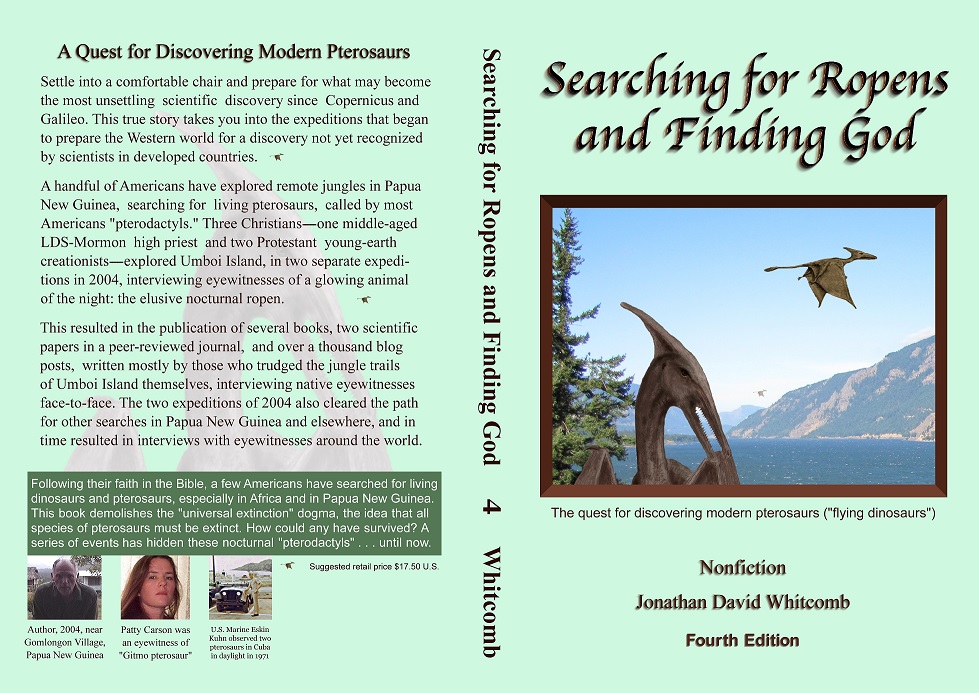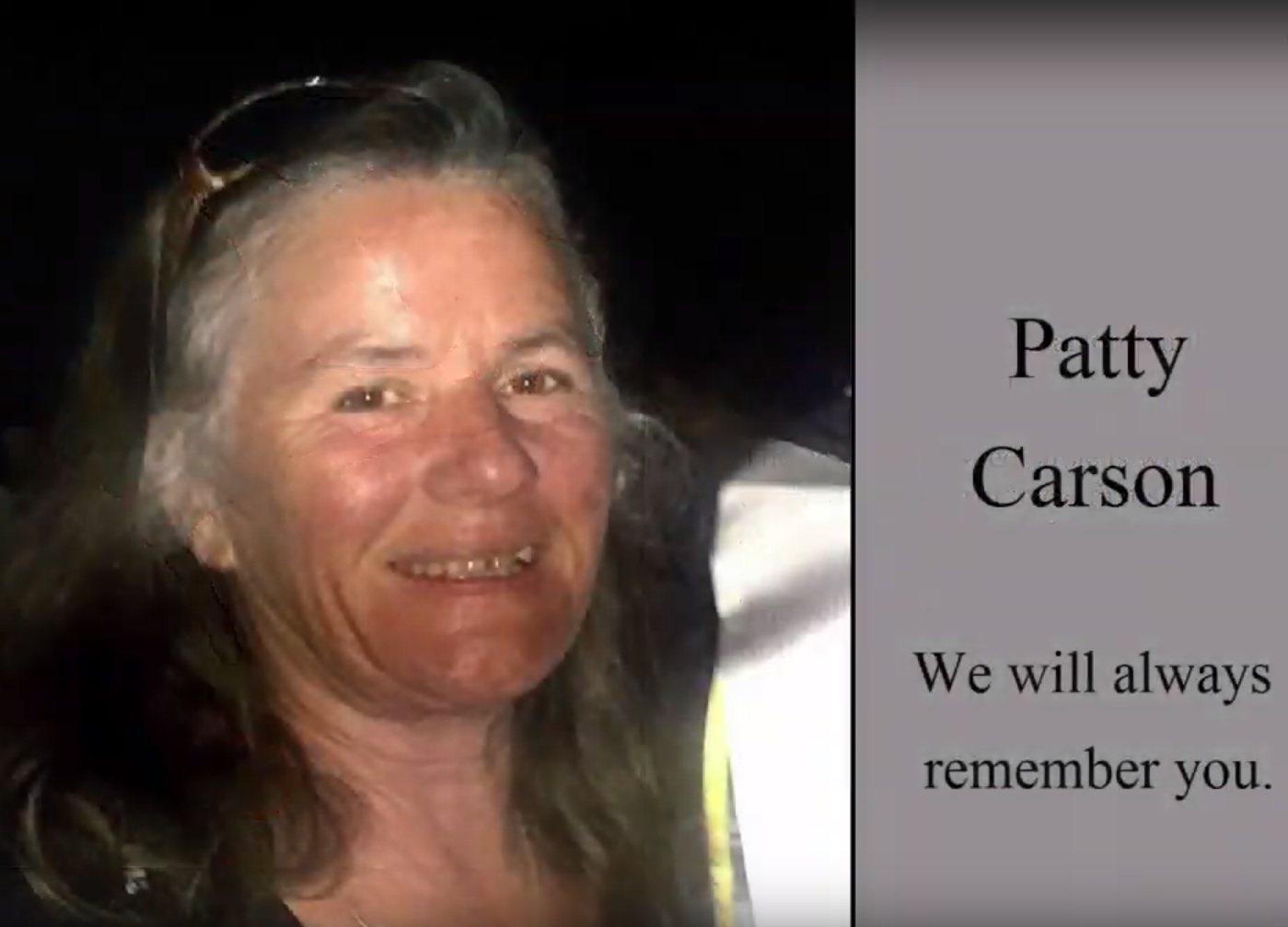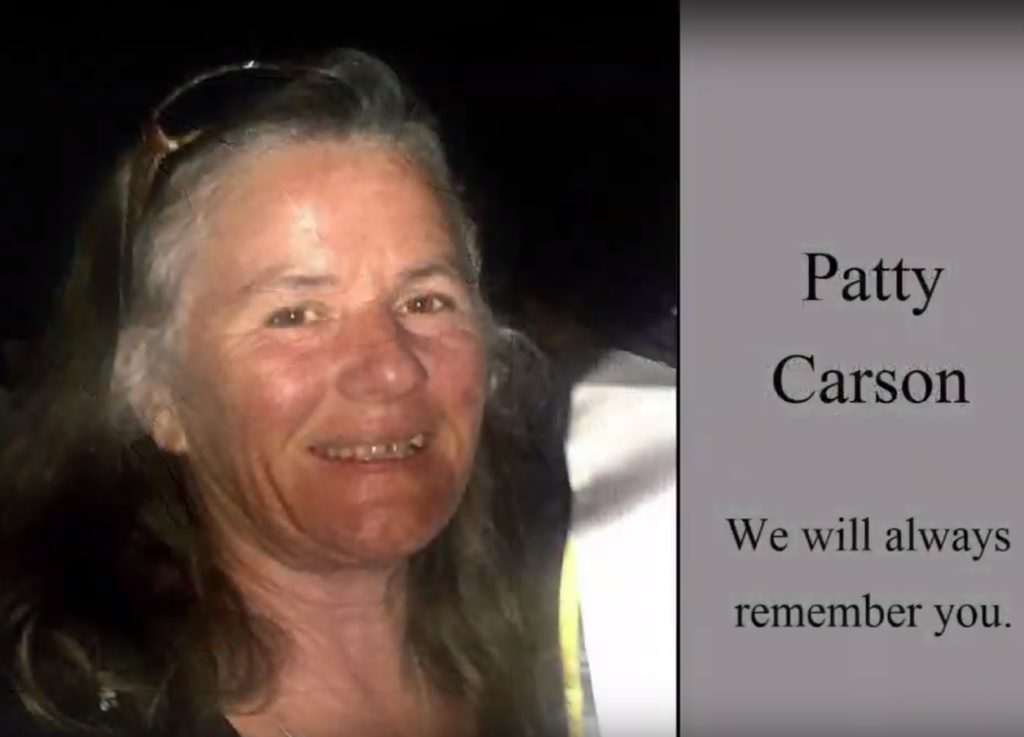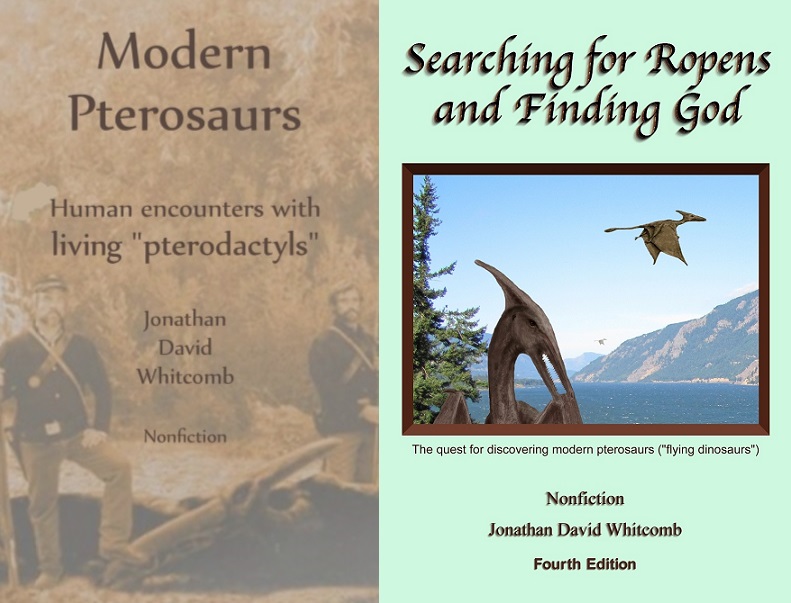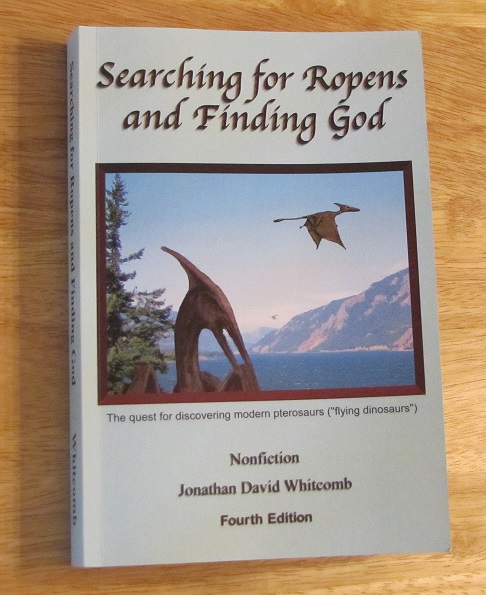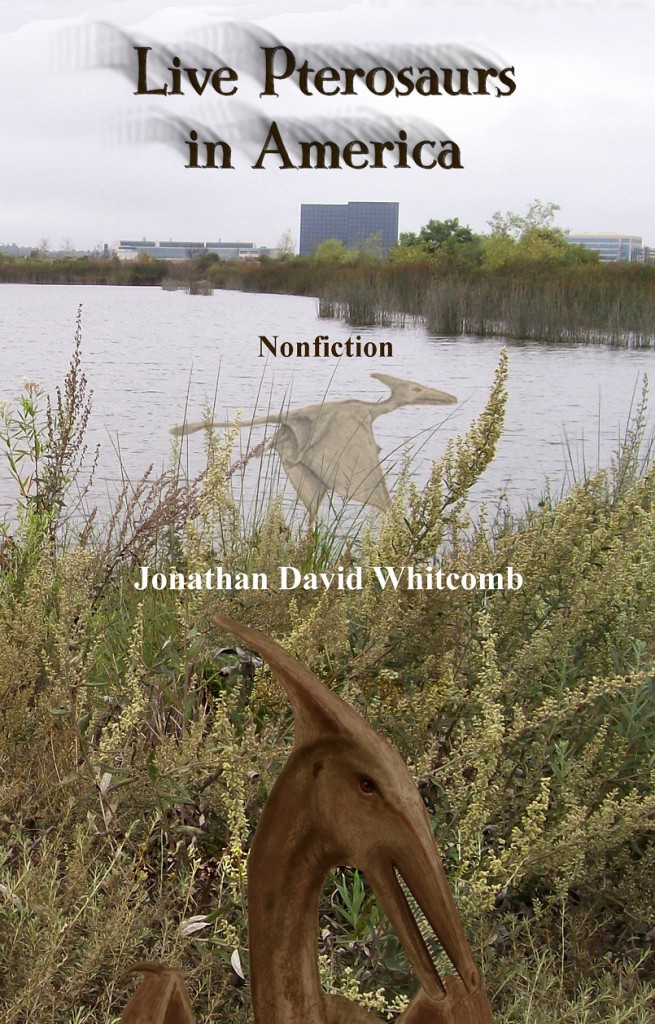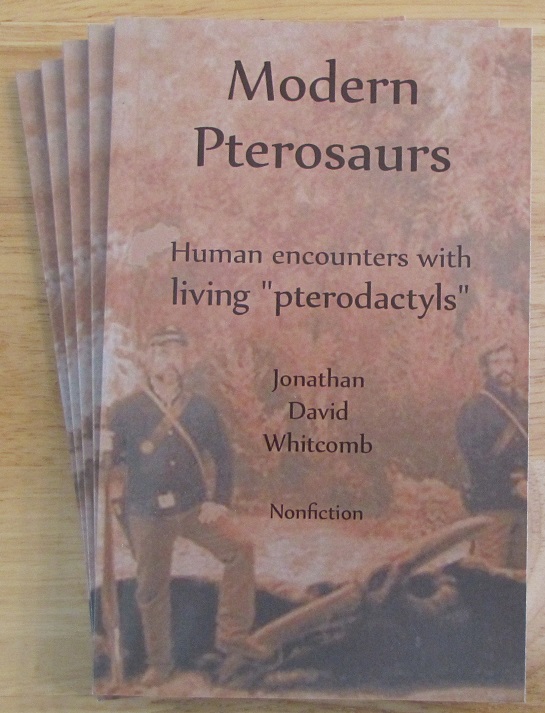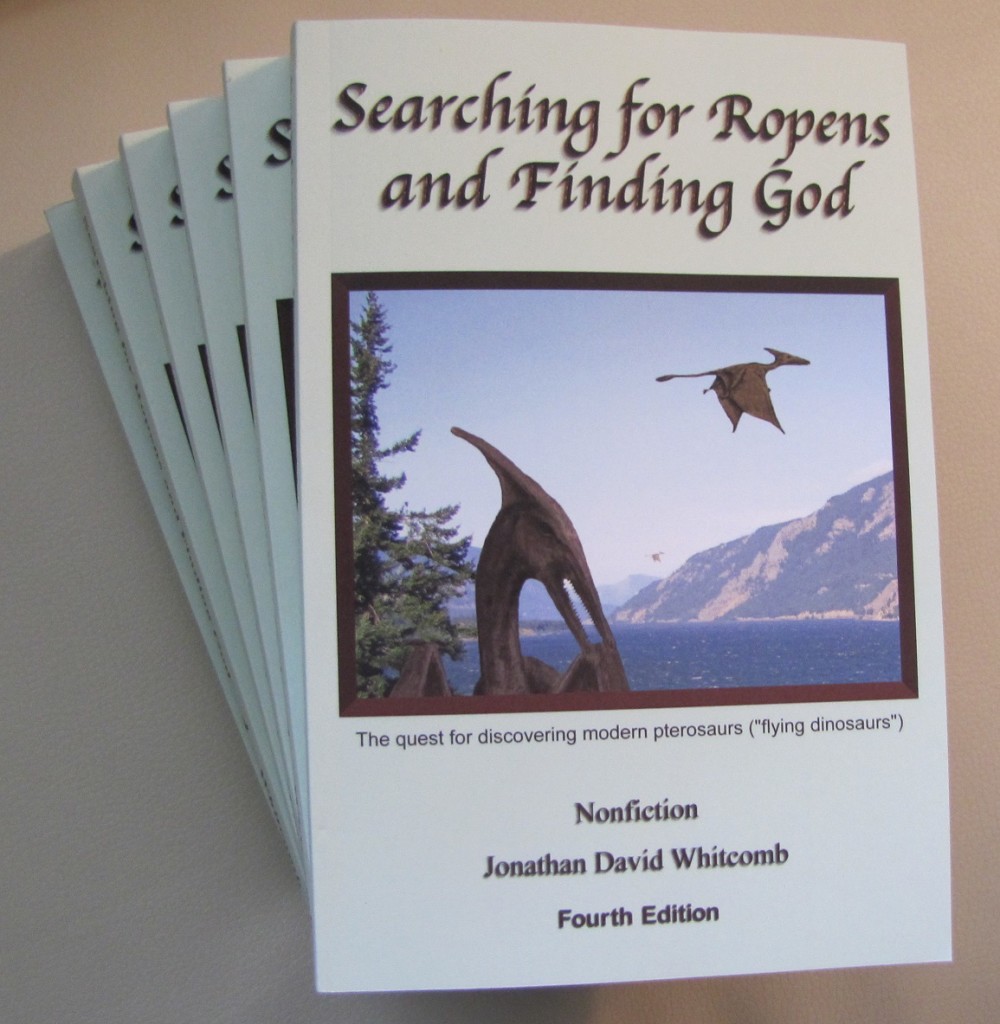By the investigative journalist Jonathan Whitcomb
Not all pterosaurs are extinct. Considering all the investigations and research done over the past two decades, it is practically impossible for all their species to be extinct, unless hundreds of thousands of persons worldwide have been encountering flying creatures that are not descended from ancient pterosaurs yet have appeared to have inherited a significant number of their obvious characteristics. That seems unlikely.
“Scary Flying Creatures in the Southwest Pacific” (video)
The video above is mostly on a few sightings of apparent living pterosaurs in Papua New Guinea, including some of the more frightening encounters.
.
Modern Pterosaurs in Australia
From the nonfiction book Searching for Ropens and Finding God (fourth edition), by Jonathan David Whitcomb:
Pages 31-33:
The couple was taking a walk in December of 1997, at 10:30 p.m., (in Southwestern Australia, probably a pleasant evening) between the suburbs of Ocean Reef and Heathridge, on Marion Avenue, when they saw, about half a mile inland, something in the sky. As it drew closer, gliding south, parallel to the coast, it shocked them with a “lizard appearance” and a wingspan of thirty to fifty feet. . . .
[in the words of a scientist (one of the two eyewitnesses)]
We had been walking in the evening and had just crested a hill and were on the down slope along a major thoroughfare. In the distance, I perceived an object in the sky. . . . its progress had brought it closer and while its shape did resemble a bird, I thought by now that from its apparent distance, it must be the largest bird I had ever witnessed.
It did not appear to be covered with feathers but had a leathery texture. Soon after it passed us, it flew over a more brightly lit sports area which highlighted even more the leathery appearance, also bringing more detail to view. . . .
I . . . estimated the size to be in excess of thirty foot, possibly as great as fifty foot. My eyes told me it was nearer the greater of these, my rational mind wants me to believe the lesser, since either of these is astounding for a flying creature . . .
###
.
A modern pterosaur!? How could it be? Extraordinary but true, huge flying creatures, with no feathers yet unlike any bat, live among us, although they mostly fly at night.
.
Pterodactyl sightings in South Carolina
I never heard of Charlamagne tha God (CTG on this blog post) until I read the new comments under my video.
.
Not all pterosaurs are extinct
. . . if my assessment of each of those 128 reports was anywhere near the mark, it is practically impossible for all of those reports to have come from non-pterosaurs: Not all pterosaurs are extinct.
.
Eleven sighting reports of ropens, a.k.a. flying dinosaurs, in North Carolina, including Raleigh, Durham, Conover, Wilmington, Guilford County, Kernersville, and Charlotte . . .
.
Living pterosaurs in a newspaper article
“As a self-described ‘modern pterosaur expert,’ the Utah-based author is circulating news and running websites that describe encounters with prehistoric, flying reptiles that scientists classify as thoroughly extinct.” [referring to Jonathan Whitcomb]
.
The nonfiction author Jonathan Whitcomb, of Murray, Utah, in 2017 and 2018, interviewed four eyewitnesses of an apparent “pterodactyl” in central Utah. He now declares that those reports from Draper, Salt Lake County, help distinguish Utah in a map showing where similar sightings have been reported across the United States.
.
Strange flying creatures in North Carolina and Utah
A nonfiction-cryptozoology author has analyzed eyewitness accounts of apparent non-extinct pterosaurs, commonly called “pterodactyls” or “flying dinosaurs,” and found that several states in the USA stand out, including Utah.
.
Flying creatures in the southwest Pacific
Ropens and other modern pterosaurs live in and around Australia and Papua New Guinea . . . Reports of Live Pterosaurs in the Southwest Pacific
.



